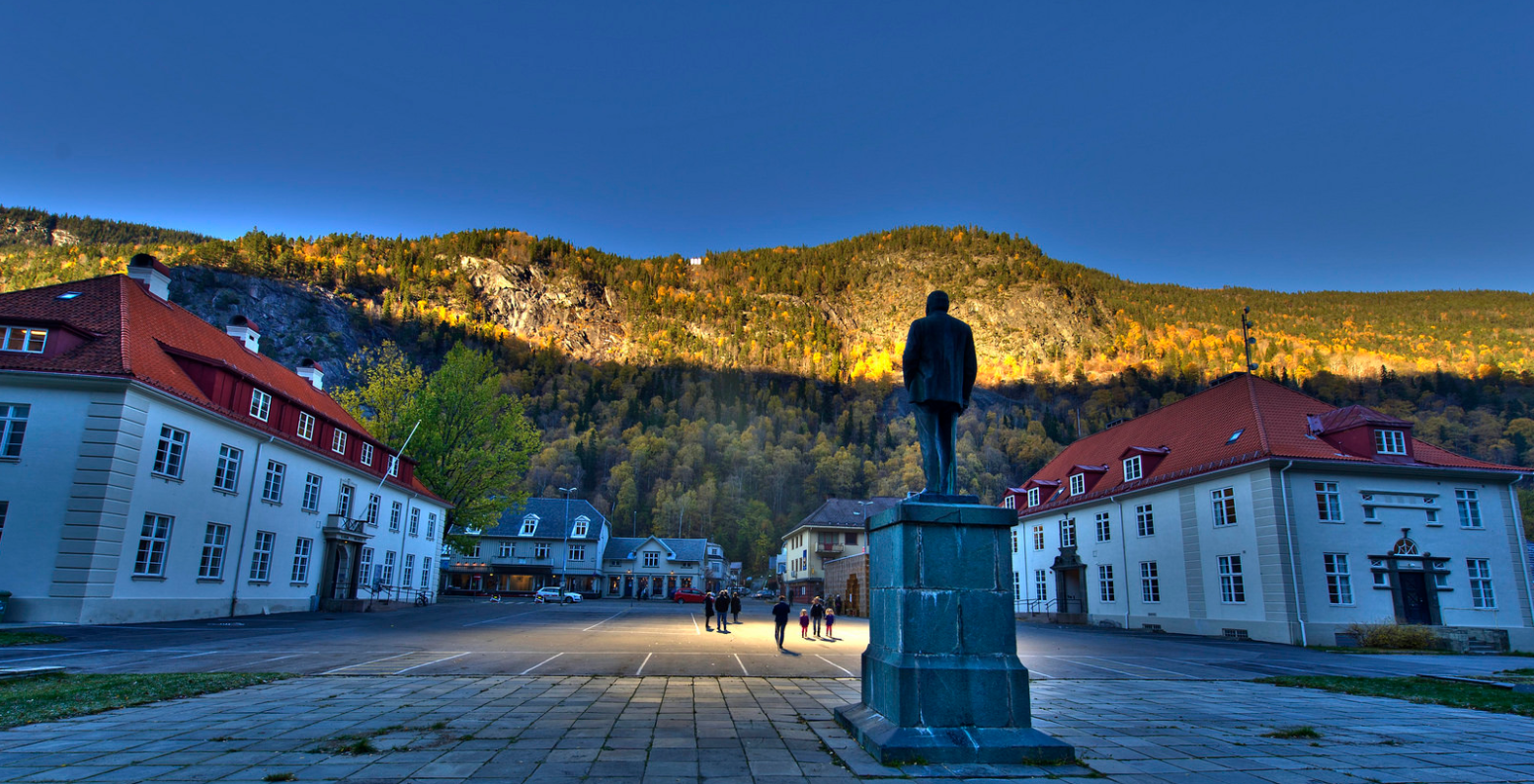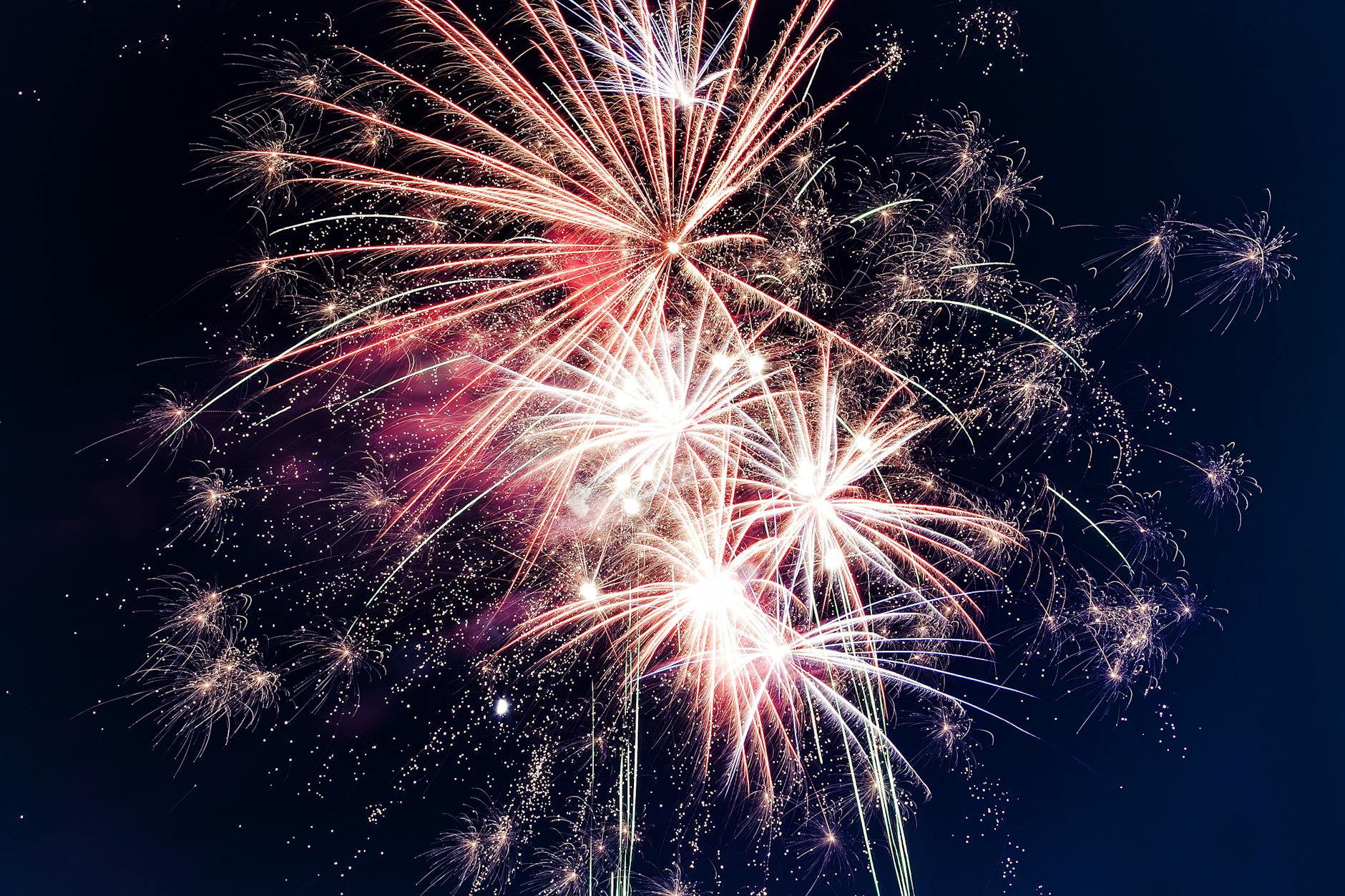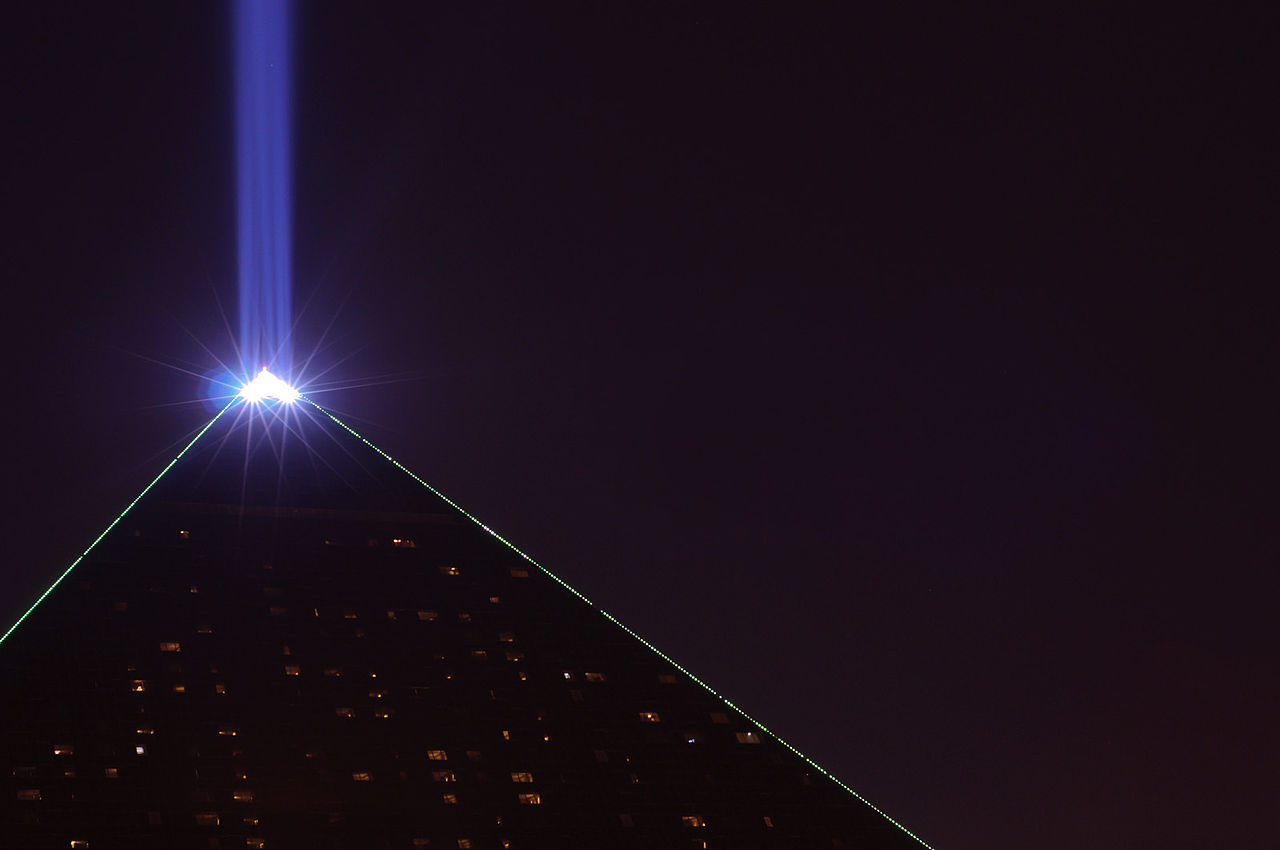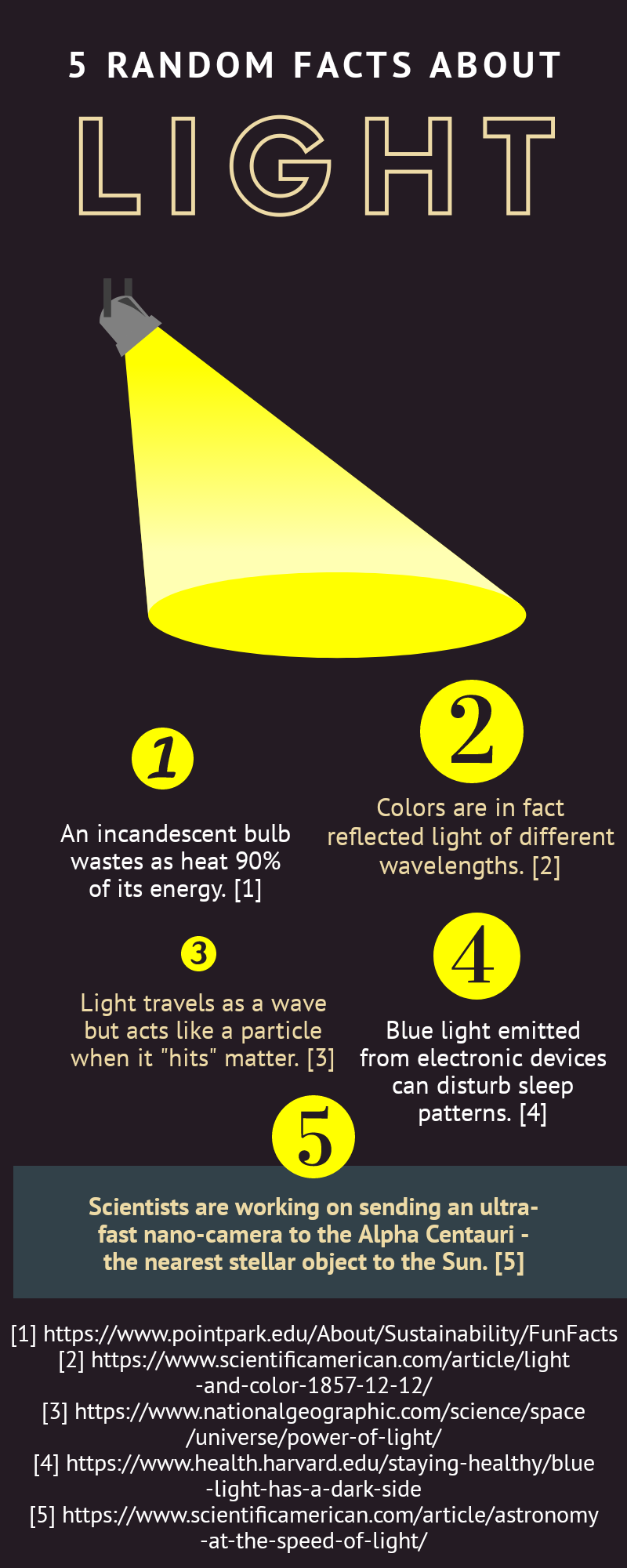© 2018-10-24 Azerbaijani translation by Amir Abbasov, Ukrainian translation by Anna Matesh, French translation by Maiwenn Cosqueric

The celebration of light (solstice festivals) is still ingrained in many cultures.
Few of today’s advancements would be here without the marvellous natural phenomena that drive them. It is precisely one of these wonders - light, that is the subject of this post. Here are five grand things that people did in celebration of light.
They caught light with giant mirrors

The illuminated square of the Norwegian town of Rjukan.
People form communities in many peculiar places. Throughout the ages, towns and villages have spawned across all extremities - from nesting on top of mountains to floating on water and from piercing through rocks to settling under the earth. But despite the spiritual or practical reasons for building a life where few would dare, living in such a place presents challenges that call for creative solutions. And while such an extreme existence means that one is ready to put up with a lot of things, living in the absence of light is rarely one of them.
The town of Viganella nests in a valley in the Italian Alps which means that the 185 people who live there don't see much sunlight from November until January. That was until 2006 when at the cost of $120 000 a 26 ft by 16 ft steel sheet was installed on a nearby ridge. The installation acts as a giant mirror that reflects sunlight at the village.
In 2013 the Norwegian city of Rjukan, a place that wouldn’t see sunlight for half a year, followed suit and had three huge mirrors installed in such a way that the town’s square is bathing in sun rays during the winter.
They lit the sky

Fireworks have existed in China since the 9th century.
Light might fascinate scientists, but it is equally enchanting for folklore. The symbolism of light as a source of good, hope and purity is a key motif in tales and legends all across the world. Mighty and superior as we humans think we are, it's the natural elements - light, fire, water, earth that can truly show us how little we know and how little we can do compared to the force of the Universe. Hence, controlling the elements is the ultimate sign of power and so in many cultures - from Cyprus to China, and from the Philippines to Saudi Arabia, fireworks are the epitome of wealth and command.
The firework shows in these countries are beyond spectacular and it is the last two that have been at the forefront of pyrotechnical mastery. In 2016 the greetings for New Year in the Philippines came with a Guinness record of 810 904 fireworks. The impressive fleet of pyrotechnical devices held the leader place for the largest firework show until the last week of September this year.
On the 23rd of September, Saudi Arabia celebrated its 88th National Day with a display of 900 000 fireworks thereby setting a new record. The festivities were grandiose in line with the Arab state’s image. In fact, the light show set two records, as the fireworks served the purpose of providing a green blanket of light over which 300 drones juxtaposed white lasers to form the largest flag in the world.
They sent a beam of light to the Galaxy

Luxor’s light beam no longer operates at full capacity due to cost cutting measures.
When referring to having completed something we say that it “finally saw daylight.” When things get especially tough, we calm ourselves by saying that the “sky is darkest just before dawn.” When speaking of making it through tough times, we often mention a “ray of hope” or
that there is “light at the end of the tunnel.” Hope, completion and light go hand in hand, and such colloquialisms find their way in the languages of many cultures. But the rays of hope are not limited to verbal expressions. Lighthouses are a ray of hope for those stranded at sea. And what about a man-made beam of light that pierces through the night sky?
Vegas might be known for roulettes, blackjack and poker, but the city is equally revered for its architectural marvels. Among the sea of glorious hotels, one stands out as the embracer of light. The Luxor Hotel is home to the strongest human-made beam of light - the Luxor Sky Beam. The ray is made of 39 7,000 watt lamps, and one can spot it from an aircraft 275 miles away.
The
Luxor Sky Beam is in some form a ray of hope in that the FAA has
designated it as a waypoint meaning that pilots can use it for
navigational purposes. But the Sky Beam seems to also be a “light at
the end of the tunnel” for those who have wandered a bit too much
around the city. John Lichtsteiner, a Luxor engineer said for
lasvegasnow.com: "We get other comments like, 'No matter where I go in
Las Vegas, if I can see the Luxor beam, I know I'm all right; even if I
get lost, I look for the beam and find my way home.’”
They harnessed it for a better future
 | There’s a light bulb in California that has allegedly been
burning since 1901. Light is an intricate subject. We know that it exists, we see it, we study it, we produce it, yet we can’t touch it. But what’s even more fascinating about light is that people have learned to use this power to build a better future. One where humanity doesn’t need to pick between comfort and sustainability. A future that doesn’t wage war on our ecosystem; providing an existence that advances without leaving a Sasquatch-sized carbon footprint. By harnessing light people have turned dry, lifeless patches of soil into power-generating lots that supply green energy to millions of households. This year an Italian energy behemoth completed one of the most ambitious projects in the are of green energy. Named Villanueva, Enel’s $650 mln. solar park in the Mexican desert of Chihuahua spans across 2400 ha hosting over 2.3 mln. solar panels. The installation is set to produce over 1,700 GWh per year, supplying 1.3 million homes with sustainable energy. The Villanueva solar park is only one in many similar monumental projects that keep rising across the world. Current leaders in the field are China and India, with the last one boasting some of the largest solar parks in the world. Once completed, the 4500 ha Pavagada Solar Park will work at a capacity of 2,000 MW, while the 4500 ha Bhadla Industrial Solar Park, which is set to be finished by the end of next year, should be able to produce 2,255 MW. In 2030, however, it is expected that the Dubaian Mohammed bin Rashid Al Maktoum Solar Park should be completed to its full capacity of 5000 MW. |
They helped those who cannot see it

Technology is providing hope to millions of people who can’t see.
To one poet “light breaks where no sun shines (Dylan Thomas), to another “the light dances” (Rabindranath Tagore). To an optometrist, light is what helps us see - objects reflect light which our eyes transport to the brain for processing. After that, our brain deciphers the size, shape, colour and texture of the object. But for the 250 mln. visually impaired people that live across the world seeing light and objects is an ongoing struggle; for 36 mln. of them, the legally blind, even impossible. Some were born this way, while others lost their sight progressively or in an instant.
Recent technological developments are bringing a ray of hope to the visually impaired. Take as an example the Toronto-based startup eSight. The company researches and develops goggles for people with severe visual impairments. The headset utilizes HD cameras that capture a real-time image and project it over HD screens in front of the user’s eyes. Thanks to eSight people for whom simple everyday tasks required lots of planning can now live without restraints.
The 63-year old Canadian Gary Foster spoke with CNBC about his experience with eSight. Speaking of the illness that cost him his vision, Foster said: “All I ever heard from the doctor is, 'Sorry, there is nothing we can do for you.’” But after living for over a decade without seeing, Foster found out about eSight. “When I first put it on, I was able to read to the bottom of the eye chart," Foster said.
The intricacies of light have been keeping busy some of the brightest minds in the world and continue doing so. And while there’s probably more to be uncovered about light’s “mechanics” than we can phantom, bright minds have managed to understand this inexhaustible (possibly) source of energy enough to do some good with its help.
| About This Blog... I've been writing about computers, software, Internet and the rest of technology since 1992, including a 17 year (1995-2012) stint as 'High Tech Office' columnist for Business in Vancouver. This blog includes thoughts on technology, society, and anything else that might interest me. Comments, emailed to alan@zisman.ca are welcome - and may be published in whole or part. You can follow me on Twitter or Google + for notice of new blog postings. |
 |